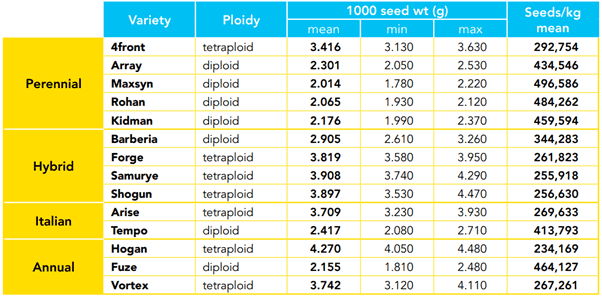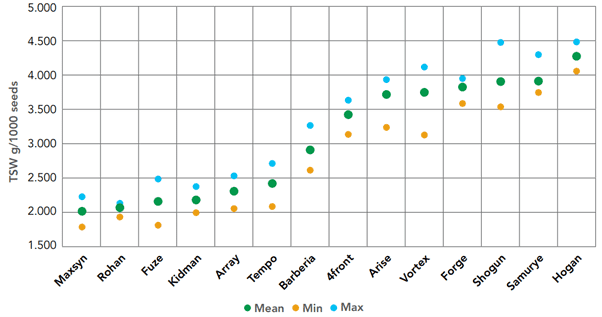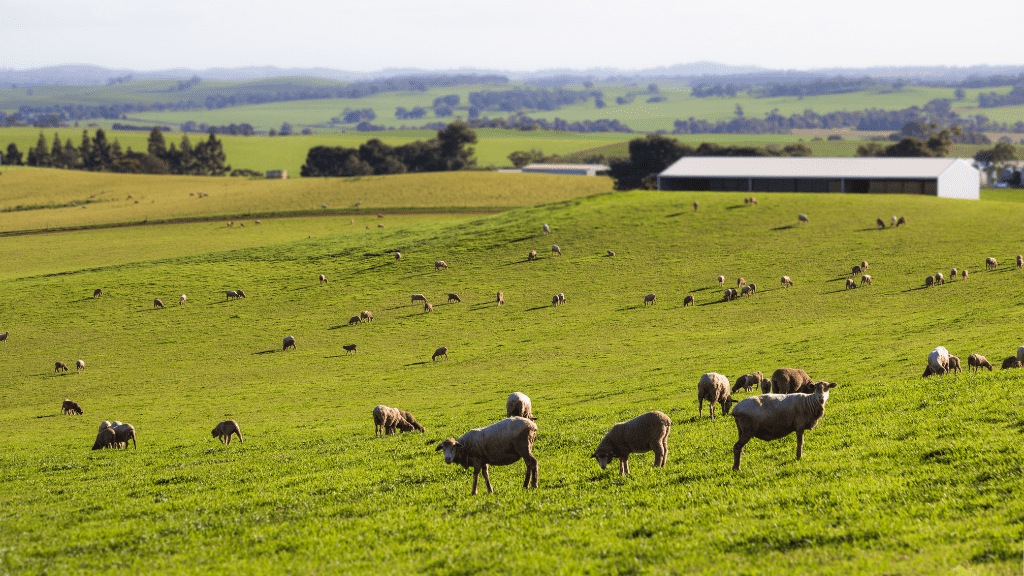Variations in ryegrass seed sizes can present a strategic opportunity for you to adjust sowing rates, potentially leading to significant cost savings while still achieving your production goals. This fine-tuning of seeding rates can be particularly beneficial in different scenarios, such as when sowing mixed pastures to target the ideal composition. Standard sowing rates for ryegrass range from 20 – 25kg/ha in diploids and 25 – 35kg/ha in tetraploids. The difference between your diploid and tetraploids is the number of chromosomes per cell; livestock generally find tetraploids more palatable if they have a choice and will graze quicker and more evenly.
There are benefits associated with both increases and decreases in sowing rates. Higher sowing rates are associated with increased competition with weeds, less bare ground, reduced risk and faster time to first grazing. On the other hand, a lower sowing rate is associated with money savings, allows space for benefits from companion plantings, stronger individual plants and later feed are all associated with a lower sowing rate. This knowledge equips you to make the best decision for your pasture management.
Calculating the Optimum Sowing Rate: An Equation:

This equation does consist of a few assumptions. Targeted plant density for high-performing pastures is based on broad recommendations, with suggestions of 400 plants/m2, but this may require 500 plants to be sown. Where multiple species will be sown together, guidelines suggest proportioning the seeding rate at 40% of the monoculture rate (160 plants/m2). Over-sowing rates into an existing pasture are usually around 50 – 75% of the full sowing rate, depending on residual plant densities. The industry standard for seeding rate is 85%, but keep in mind poorly grown or stored seed will have reduced viability.
A range of factors can influence seed size. These include:
- Growing conditions, especially how the crop ‘finished’
- Harvest timing and physiological seed age
- Harvester settings
- Seed cleaning system used
- Differences in the paddock that influence production
Below are two graphs from Barenbrug, a trusted seed supplier, who have meticulously examined their ryegrass varieties and their seed sizes for the 2024 season. This data demonstrates the significant variation that can occur within a single variety, similar to what you see with canola seed.


Contact our agros if you need more information to help you make decisions for your pasture management.

